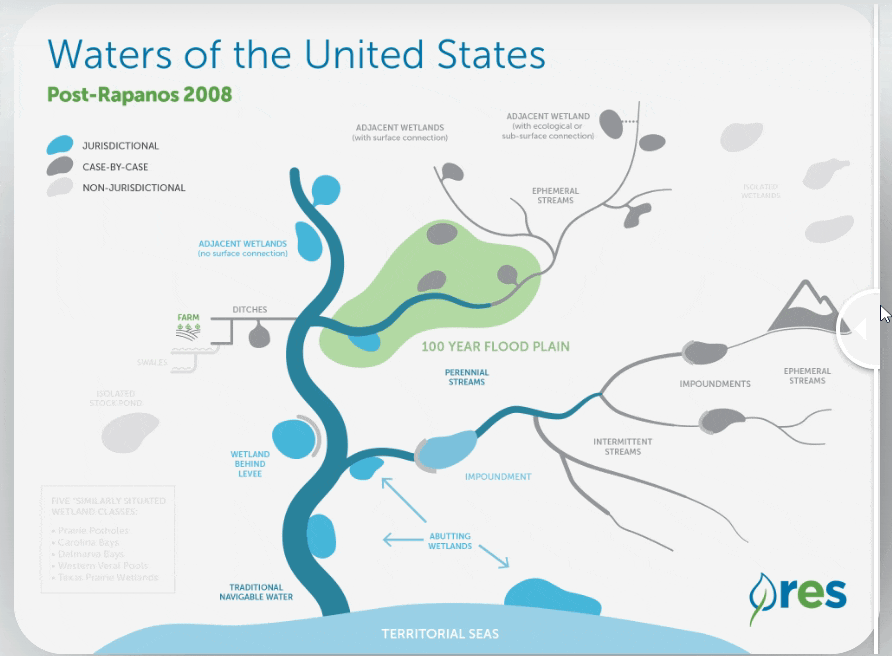
Promoting Tribal Roles in Providing Compensatory Mitigation Offsets

Build Conservation Banking Back Better

Perspectives on the Upcoming Supreme Court Decision on WOTUS from the Restoration Economy Community

Scenarios of WOTUS in SCOTUS
The Supreme Court will hear a case called Sackett v EPA on October 8th to rule on just what constitutes Waters of the United States (WOTUS). WOTUS is a jargon-y term describing the extent of the federal protections of wetlands, streams, rivers, and lakes across the US. It has huge implications for the public, the regulated community, and the restoration economy. When SCOTUS makes its decision on WOTUS, there will certainly be hyperbole in the headlines. We provide a level-headed discussion of the possible outcomes that could come in October, and explain what those scenarios would mean.

Environmental agencies need more modern approaches to data and technology - a Digital Service for the Planet can help.

One Month Left: Clean Water Commerce Applications
Clean Water Commerce applications due in one month

ICYMI: Clean Water Procurement Program Signed into Law 1 Month Ago Today
One month ago today, Pennsylvania passed the country’s second legislatively-authorized clean water outcomes procurement program

What’s In a Name? One writer’s frustration with technical term redundancy

Common Pay for Success contracting pitfalls and how to avoid them

New Report: Clean Water Act - Priorities for Offset Policies

Clean Water Act: Priorities for Offset Policies that Benefit the Environment and Communities

New Report: A look at four new natural resource procurement bills

A look at four new natural resource procurement bills

New Report: Delivering Faster Restoration with Bipartisan Infrastructure Law (BIL) Funding

Delivering Faster Restoration with Bipartisan Infrastructure Law (BIL) Funding

Streamlining Restoration Projects with Nationwide Permit 27: An Explainer
This explainer reviews how NWP 27 created huge efficiencies in permitting aquatic resource restoration with widespread benefits to coastal and upland wetlands, streams, and other resources. Other Federal and state regulations could take a cue from this example and streamline projects proven to create a net benefit in natural resources. Photo credit: James Loesch

Recent Efforts to Streamline Restoration Permitting: Why it matters
Ecological restoration projects are often as difficult, if not more so, to permit than development. There are multiple regulatory agencies, exorbitant costs, and often years of time needed to secure proper permits. Obviously, this is a barrier for restoration work. Smaller firms and local efforts often do not have the money, time, or technical expertise to navigate this difficult process and will either abandon or avoid projects because of permitting red tape. Our ecological crises are on tight timelines; we don’t have years to wait around for complicated layers of permits. When speaking about our response to climate crises, Wade Crowfoot, California’s Secretary of Natural Resources succinctly put it, "Winning slowly is still losing. We’re still losing if we’re winning in tiny bites. We need to be doing much bigger things faster. That’s how urgent the situation is."

How We Can Get Better, Faster Environmental Outcomes from the $9+ Billion Water Resources Development Act

Maryland Enacts Nation’s First Conservation Law Focused on Private Finance


